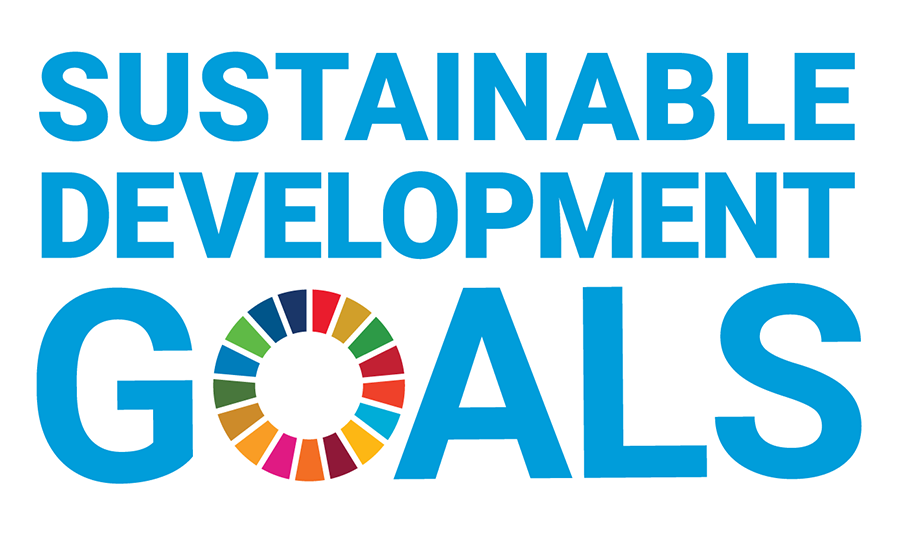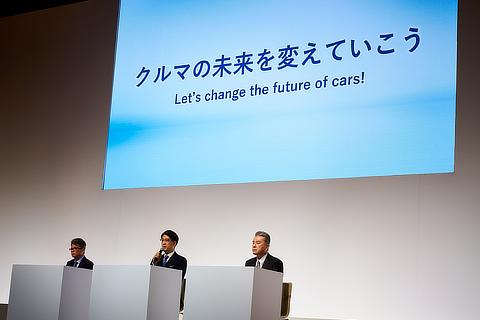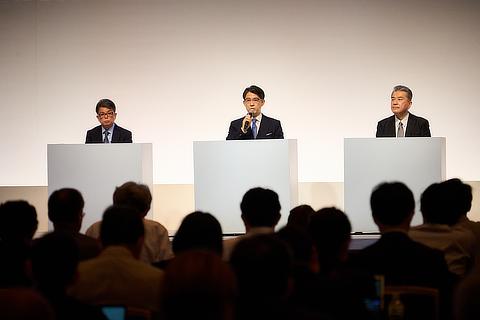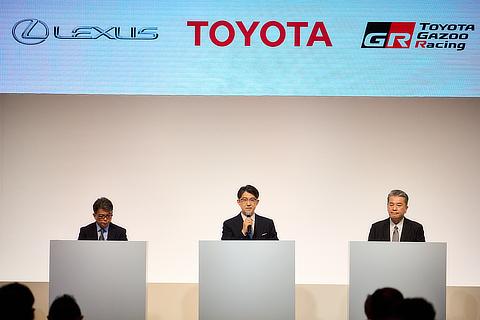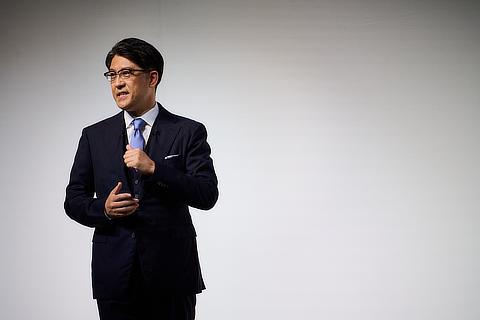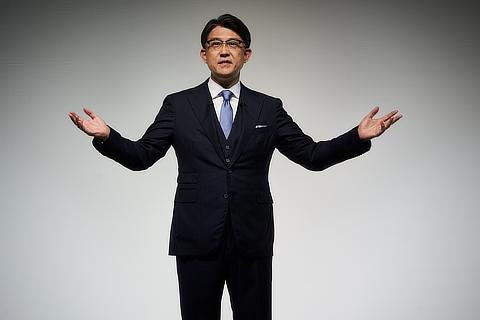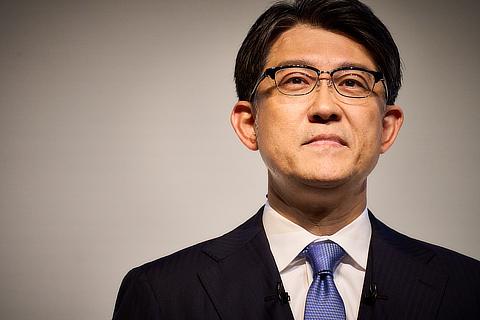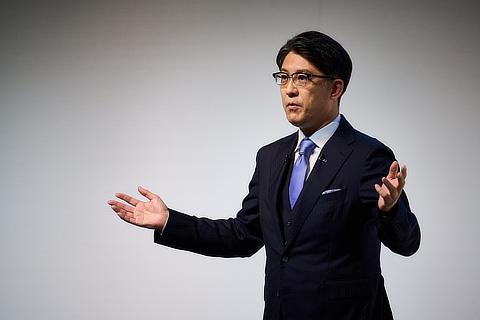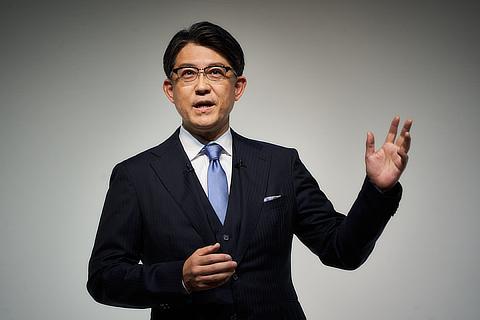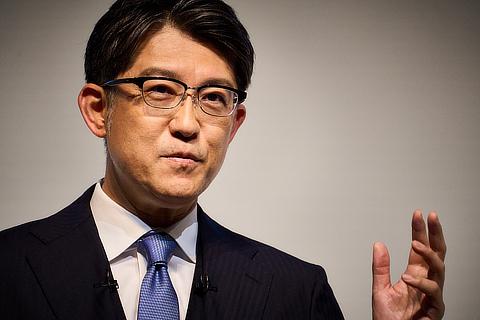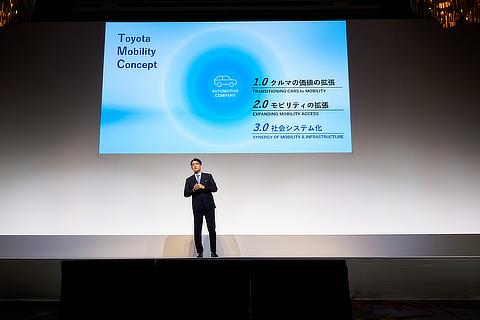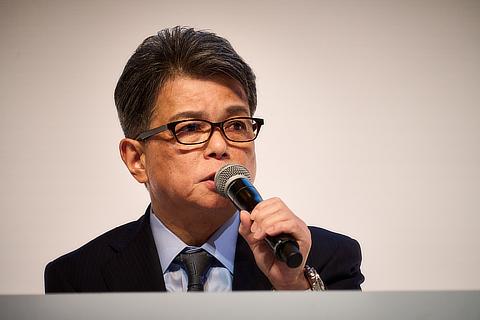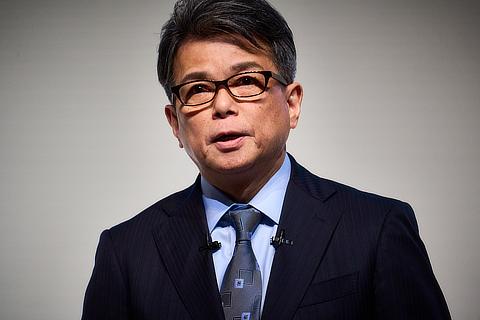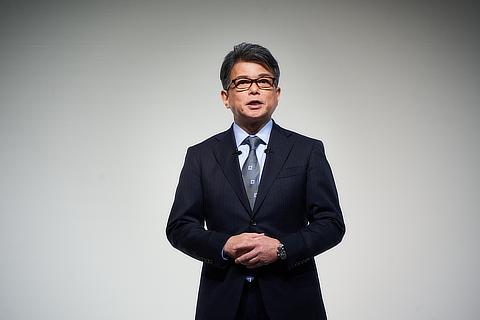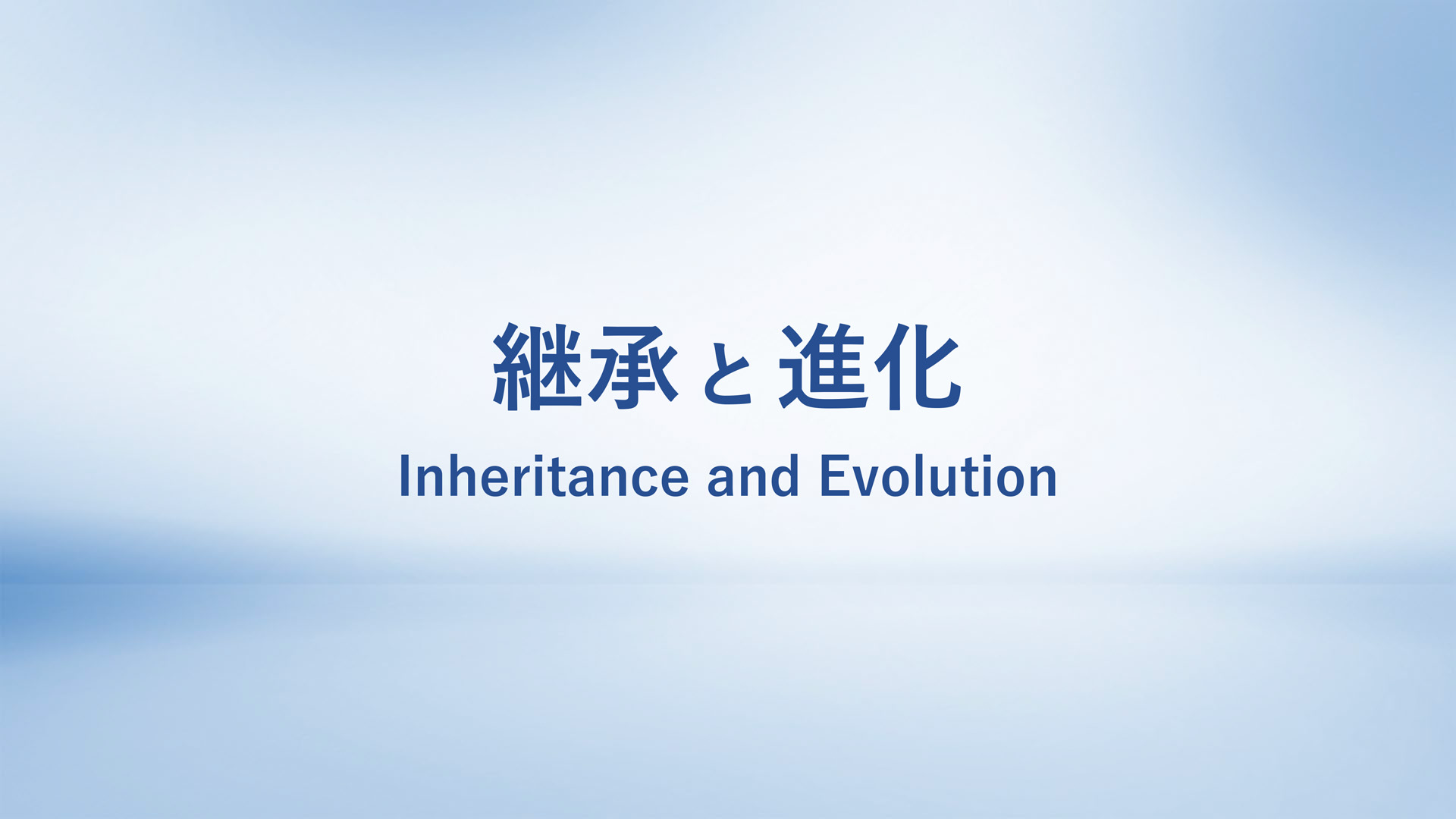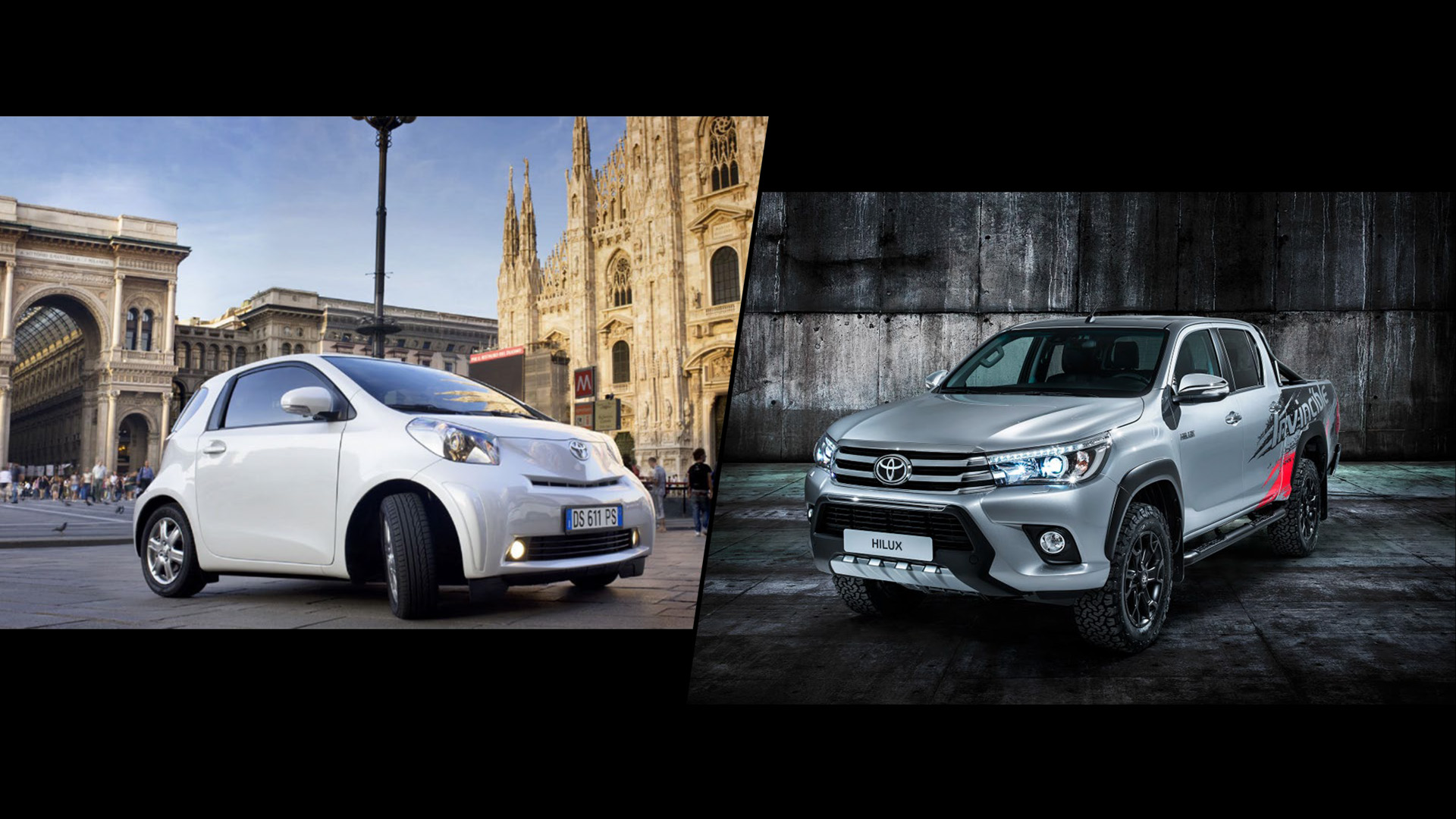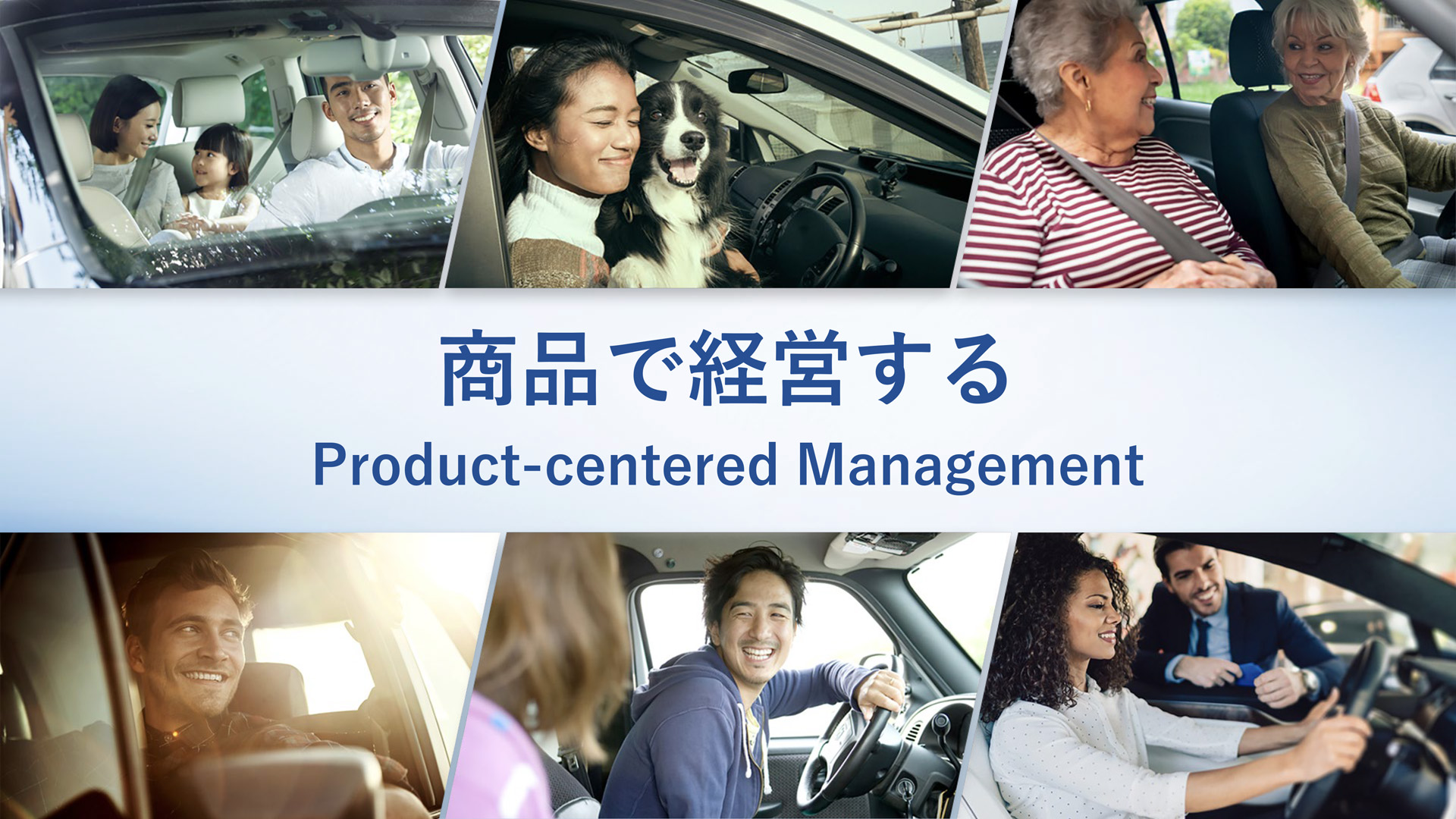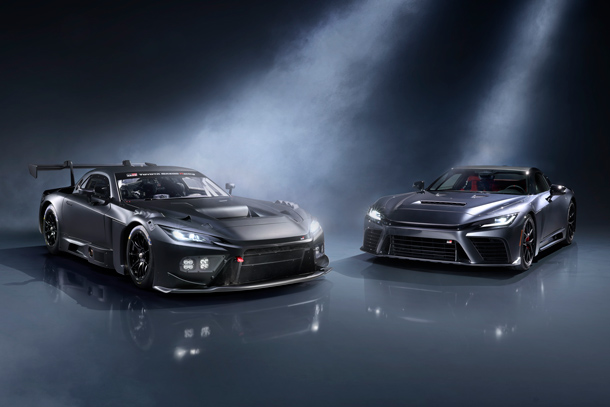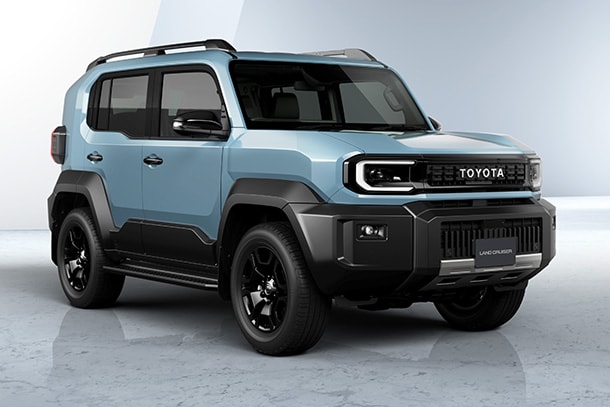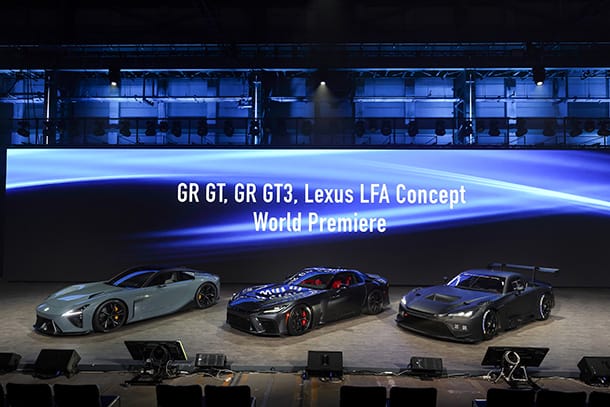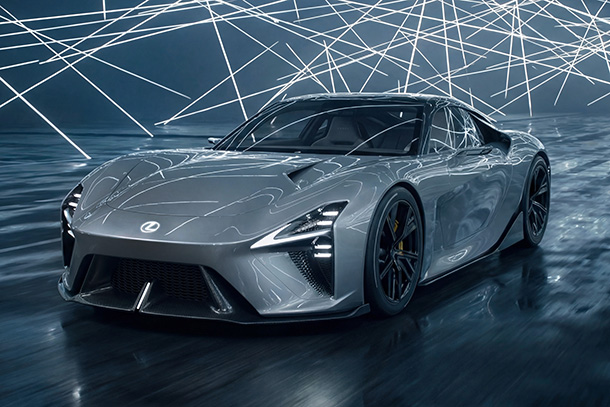Apr. 07, 2023
New Management Policy & Direction Announcement
Toyota Motor Corporation (TMC) made a New Management Policy & Direction Announcement on April 7 from 13:30 JST. Video of the announcement is available below.
Presentation
Q&A Session
Please click below for the presentations.
Presentation
Koji Sato, President & CEO
Hello everyone. I am Koji Sato.
Thank you very much for taking time out of your busy schedules to be with us here today. Our new management structure kicked off at the start of April.
First, I would like to talk about the management vision of our new structure and the future we are aiming for.
Our new management structure's theme is "inheritance and evolution". I believe that inheritance means clarifying our unshakable motives and moving into the future.
"Let's make ever-better cars!"
These are the most important values we have cultivated over the past 13 years. Talking about cars on the front lines and striving hard to bring smiles to customers' faces...Toyota values this starting point of car manufacturing. To continue to pursue ever-better cars together with Chairman Toyoda, who is a master driver and Morizo...That is―and will continue to be―the centerpiece of Toyota, the carmaker that manages by using its products.
This is a photo of my first car. I have loved cars ever since I was a child. And by being involved in making cars at Toyota for many years, I learned the joy of car-making. I want to share that joy with many colleagues. And together with my colleagues, I want to create cars that make our customers smile even more. That is why I want to be a president who keeps on making cars.
Another thing I would like to be determined about as president is team management. Car-making is a team effort. Together with the 370,000 Toyota associates around the world, our suppliers, and our dealers, we all make cars together. I would like to put into practice management that leverages the team power of such a carmaker.
Today's Toyota has many management members who share the same values but, at the same time, are highly individualistic. In times of rapid environmental change such as now, we must play with our roles, not titles, to move across functions, thereby increasing the volume of what we put into practice many times faster. This is most important. That is why, under the new management structure, we will accelerate the taking on of challenges for the future, with a new management style of "simultaneously and organically working as a team."
From now on, we aim to transform into a mobility company. Toyota's mission is "Producing happiness for all." We want to protect the beautiful Earth and enrich the lives of people around the world. We want to change "Minus(-)" to "Zero" and further create the value beyond Zero. That is our aim as a global company. For the car to continue being a necessary part of society, we need to change the future of the car.
For that, there are two major themes. The first is carbon neutrality. We are fully committed to achieving carbon neutrality in 2050 over the entire life cycle of our vehicles. When it comes to car manufacturing, we will continue to pursue a variety of options, based on a multi-pathway solutions, to stay close to the future of energy and the condition of each region.
First, we will thoroughly implement electrification, which we can do immediately. To steadily reduce CO2 emissions from where we stand now, we will promote the practical popularization of electrified vehicles. We will strengthen sales of hybrid electric vehicles, including in emerging markets, and increase the number of plug-in hybrid electric vehicle options. We will expand our lineup of battery electric vehicles, or BEVs, which represent one important option, over the next several years.
At the same time, we are boldly preparing for the future. As one of our efforts, we will do our utmost to develop next-generation BEVs for the era of BEV popularization and create new business models. And we will also accelerate projects for the realization of the hydrogen society that lies just beyond. With partners across industries and countries, we will advance the expansion of the realm of using hydrogen by such means as social implementation in Thailand and Fukushima, the mass production of commercial fuel cell electric vehicles, and the development of hydrogen engine technologies in the arena of motorsports. Furthermore, we will work with the energy industry to develop technologies for carbon-neutral fuels.
We will work to promote electrified vehicles and reduce CO2 emissions with leaving no one behind, including in emerging markets. Through this all-direction approach, we aim to reduce average CO2 emissions for vehicles we sell worldwide by 33% by 2030 and by more than 50% by 2035 compared to 2019. We will continue to promote decarbonization globally and steadily toward 2050.
Another theme that will change the future of cars is "expanding the value of mobility." The cars of the future will become more connected to society as they become more electrified, intelligent, and diversified.
In addition to moving people's hearts and emotions and moving people and goods, we will gather the movements of energy and information and link them together as one through data. By doing so, we will be able to provide seamless mobility experiences that are connected with other mobilities, as well as provide new value for cars as part of the social infrastructure. Cars connected to society will also be closely connected to various services that support people's daily lives, such as telecommunications and finance, expanding the circle of new value-added services centered on mobility.
"Carbon neutrality" and "the value of mobility." Based on these two themes, we have developed our mobility-society vision, "Toyota Mobility Concept." Evolving the car to be more useful to society based on its essential values, which have been cultivated over a long time, such as safety, security, and fun to drive... And realizing a mobility society in which everyone can move freely, happily, and comfortably... Toward such a future, we will continue our transformation into a mobility company in three domains.
The first is "Mobility 1.0." What we aim for in this is to extend the value of the car by connecting various types of movement. For example, BEVs offer new possibilities as mobility that transports electricity. Collectively serving as an energy grid, BEVs can enhance the energy security of society. That's the kind of role that BEVs can also fulfill. Also, intelligence can evolve cars even further by utilizing information gathered from cars and customers. Our software platform Arene holds the key to this new kind of car-making. Connecting the latest hardware and software will enable cars and various software applications to freely connect. Arene will fulfill an important role as a platform to support this kind of evolution. We will do our utmost to develop a next-generation BEV for 2026 together with Woven By Toyota.
What we aim for in the second domain, "Mobility 2.0", is to expand mobility into new realms. There are many people for whom we are not able to support mobility, such as the elderly, people living in depopulated areas, and people in emerging markets in which the car market has yet to mature. New mobility possibilities, such as mobility in the sky, are also expanding. Toyota, in addition to having a full lineup of vehicles, has a network of colleagues across industries, including in new forms of mobility, such as the e-Palette, and the domain of MaaS. Leveraging these strengths, we would like to go beyond our current scope of business to provide greater mobility support to our customers around the world.
And "Mobility 3.0" is about integration with social systems. Creating mobility ecosystems that tie into energy and transportation systems, logistics, as well as the way we live, and are integrated with cities and society... And a future that realizes well-being... For such, we will proceed with our demonstration experiments in Woven City. For example, we will advance our development of a new logistics system, the development of city-integrated autonomous mobility, and the demonstration of a CO2-free hydrogen supply chain that starts from Woven City, as well as a demonstration for expanding the potential of hydrogen use in our daily lives. In addition to these demonstrations that utilize digital technologies, from 2025, we will accelerate comprehensive demonstrations in real cities, leading to social implementation together with our partners.
The most important message we want to convey through our mobility concept is that the mobility lies beyond the future of the car. Cars lies at the center of our transformation into a mobility company. Expanding the possibilities of cars... To do so, it is necessary to evolve based on the concepts of "Best-in-Town" and "ever-better cars", which we have long cultivated.
We will change the future of cars based on our products and regions. Now, I would like us to continue, beginning with a more detailed explanation from Executive Vice President Nakajima about our efforts centered on products, followed by explanation by our Executive Vice President Miyazaki on our region-centered efforts.
Your turn, Mr. Nakajima.
Hiroki Nakajima, Executive Vice President
I'm Hiroki Nakajima, and I will be in charge of products.
As chief engineer, I oversaw the development of the two cars pictured here. Working with many colleagues, we faced many challenges and enjoyed many great moments together. I love that kind of car development.
At the same time, we made many mistakes. These became our flesh and blood, shaping who I am today. The way I looked and approached my work even earned me the nickname Bulldozer. I believe that it is all the more important to pave the way forward,
at a time when the right answers are unknown, with this in mind, I would like to share my thoughts on our product-centered management.
Earlier, we heard about the Toyota Mobility Concept. It is centered on enhancing the value of the car, expanding new mobility and freedom of movement, and providing new services and energy solutions as part of the social system. I will explain the three approaches that hold the key to realizing this vision: electrification, intelligence, and diversification.
Let's start with electrification. I want to begin by saying that we remain firmly committed to our multi-pathway approach. We will continue to tailor electrification to the needs of customers and individual regions by drawing on the strengths and characteristics of each vehicle type.
Firstly, battery EVs. We will expand our current line up by releasing ten new models by 2026, which would amount to 1.5 million vehicles of annual sales.
we also have plans to release next-generation BEVs entirely different from those of today―BEVs created by carmakers in 2026. This new generation of BEVs will double driving range by using batteries with far greater efficiency, While also offering designs and driving performance to set hearts racing.
We will also transform manufacturing. Drawing on the strengths of our Toyota Production System, we will change the way we work to reduce the number of processes by half. This will entail a shift to more efficient lines, including autonomous inspections and unmanned transport powered by connected technology. We will completely transform the landscape of our production plants.
We also aim to achieve carbon neutrality at all of our global plants by 2035. Also, we will overhaul existing supply chains by working with suppliers to procure superior quality parts at lower prices.
To realize these transformations, we are creating a new specialized unit. Working under a single leader entrusted with full authority, this all-in-one team will handle every function, from development to production and business operation.
Supporting this is the competitiveness such as development intensity and in-house investment which haves been halved by the effect of TNGA. We will provide the team with comprehensive support through the power of our 10-million-strong sales and revenue base.
Next, plug-in hybrids. By increasing battery efficiency to extend the EV-mode driving range beyond 200 km, We will reposition PHEVs as "the practical BEV" and will work harder on developing this as another BEV option.
For FCEVs, we will pursue mass production centered on commercial vehicles. As indicated by the blue line on the left-hand graph, one feature of FCEVs is that the energy source, hydrogen, is lightweight, so even when traveling longer distances the vehicle is not as heavy as a battery EV, and less space is required.
Refueling is also much quicker. Taking advantage of these strengths, we will work with business operators to promote FCEVs by starting with commercial vehicles such as medium- to heavy-duty trucks. Additionally, we have started basic research on hydrogen engines for heavy-duty commercial vehicles last year.
For hybrid EVs, we will continue to improve our products with a focus on high quality and affordable prices, by accounting for local energy conditions and customer ease of use. We are also committed to becoming carbon-neutral with fuel options not only for new vehicles but also for vehicles already on the market which sum ups to 20 times more than the new vehicles.
Next is Intelligence. I will explain the role of intelligence in the cars themselves, the underlying services, and in expanding our connection to society.
First, the shift to intelligent cars. This will involve expanding advanced safety technology, multimedia, and other constantly evolving feature updates to all of our vehicles. At the same time, alongside advances in the onboard operating system, our next-generation battery EVs will enable users to customize "ride feel" according to their preferences for how the vehicle runs, turns, and stops. By also honing the vehicles' essential attributes, we will create cars that are more fun to drive in terms of both hardware and software.
Next is intelligent services. This year, we will begin the public rollout of new services that connect cars to cities and infrastructure. For example, logistics systems that use real-time traffic information to boost transport efficiency, and systems that provide optimal energy management. Partnering with cities and public facilities, we will also expand our battery EV charging network, while contributing to more effective energy use. These efforts are already underway at Lexus.
Then there is the role of intelligence in society. Woven City, which we position it as our "mobility test course", will serve as a living laboratory for trialing various ways of connecting people, cars, and society.
For example, in the area of connected logistics services, we will use Woven City to address any issues that come to light through public trials, before once again implementing these services in society. By repeating this process, we will accelerate the realization of intelligent societies.
Finally, we come to diversification. I'll explain our approach to diversification, which goes beyond cars to mobility itself, and even the energy sector.
Firstly, the diversification of cars will involve expanding our product lineup, services that utilize connected technology, as well as parts, accessories, and business collaborations with new partners.
Next is the diversification of mobility. For example, we have developed an easy-lock system for securing wheelchairs with a single motion, utilizing the know-how we have accumulated over many years of developing welfare vehicles. Sales of the system are planned to start this year, and we remain committed to ensuring stress-free travel for wheelchair users. We will also expand our efforts to new mobility businesses, such as our collaboration with Joby.
Then we have energy diversification. Demonstrations using hydrogen made from water, food loss and other waste, as well as carbon-neutral fuels made from biomass and other resources, have already begun in Japan and Thailand. This energy will also be trained in the field of motorsports with an aim to promoting widespread adoption in society.
Today I've talked about electrification, intelligence, and diversification. Through our cars, we aim to create the future by working together with like-minded partners to spread the value of these ideas to all of society.
With that, Executive Vice President Miyazaki will now explain our region-centered initiatives. Your turn, Mr. Miyazaki.
Yoichi Miyazaki, Executive Vice President
I am Yoichi Miyazaki.
I have spent my career mainly in the overseas sales area. I hope you will remember me as the CFO connected to the regional CEOs.
The Toyota Mobility Concept, as Mr. Sato explained, cannot be realized without a solid business foundation and it is important to maintain and strengthen this solid business foundation. I would like to begin with a review of the role that region-centered management has played and the results it has achieved so far. Aiming to become the "best-in-town carmaker", under the call of "Let's make ever-better cars" while carefully responding to the individuality and needs of each region, we have provided high-quality cars one by one under the leadership of the regional CEOs, based on the Toyota New Global Architecture or TNGA.
As a result, we have increased sales in growing emerging markets and achieved an exceptionally balanced regional sales mix.
Also, in addition to lowering R&D costs and incentives through the effect of implementing TNGA, and with the "timely product improvement that meet the needs of each region", which is our strength, as a result of our continuous efforts to build up "cost reduction working together with our suppliers",
our earning power has grown overwhelmingly compared to the past, and we have evolved into a structure that allows us to grow our earnings while investing in the future for further growth.
Also, with our employees, shareholders, and suppliers, we have together built a cycle of growth. In addition, we have also actively promoted the introduction of electrified vehicles, and since the introduction of the first-generation Prius, a cumulative total of 22.5 million units have been sold, which is equivalent to CO2 emissions reduction of approximately 7.5 million battery EVs. The lead role was played by hybrid electric vehicles. We have refined the performance and cost by each successive generation.
As a result, the cost of hybrid systems has dropped to one-sixth of the original cost, and now able to make profit, comparable to that of gasoline-powered vehicles. In this way, Toyota has greatly been able to enhance its earning power while investing in the future, growing with stakeholders, and reducing CO2 emissions.
This is precisely what we have achieved so far through our region-centered management, which is based on our efforts to make ever-better cars.
We will continue to deepen our region-centered management and further solidify the business foundation. To do so, the first thing that we must address is how to achieve carbon neutrality.
Carbon knows no borders, and CO2 reduction is an issue that cannot wait. We need to immediately start with what we can do. Therefore, taking into account local conditions and the diverse ways of using cars. To spread the use of electrified vehicles as quickly as possible and as many as possible, we need to be very attentive to the needs of our customers.
Therefore, with enhancement of Battery EV lineup, we will continue to enhance the attractiveness and competitiveness of all powertrains, including hybrid and plug-in hybrid vehicles.
From here, I will touch upon the Battery EV's initiatives in each region.
In developed countries, in parallel with the preparation of next-generation battery EVs, with a focus on the bZ series and with further refined performance, we will greatly expand our product lineup.
In the U.S., we will start the local production of a 3-row SUV in 2025.The SUV will be equipped with batteries to be produced in North Carolina, and the production capacity will be increased.
Also in China, in addition to the bZ4X and bZ3 which was announced last month, we will launch two models of locally developed battery EVs in 2024, fit to the local needs. And will continue to increase the number of models in the following years.
In Asia and other emerging markets, we will make sure to respond to the growing demand for battery EVs. Specifically, by the end of the year, we will start local production of the battery EV pickup trucks and will also launch a small battery EV model.
In developed countries, the switch to BEVs is moving forward as the market matures, while in emerging markets, the market is expected to expand due to demand for new and additional vehicles.
Toyota, with its full lineup and profitable hybrids and plug-in hybrids, along with the increasing demand for battery EVs and diverse options will make sure to meet a wide range of global demand and is committed to further growth.
In summary, for growth in emerging markets, profitable hybrids will be used as a source of income, and with a value chain of 10 million units, we will also take in a wide range of business opportunities. In addition, we are committed to performing cost reduction by leveraging the strengths of TPS and Kaizen to the fullest extent.
As a result, we will further create a future investment capacity for the expansion of battery EV growth in mobility areas, and we will establish a strong business foundation whereby carbon neutrality and growth can both be achieved. From here, I will explain what we will be working on to realize the Toyota Mobility Concept.
While the technological innovations of electrification, intelligence and diversification are progressing, we would like to take on the challenge of contributing to the region and industrial rewarding from a more expanded perspective.
For example, in the United States, the automotive industry is at a critical juncture, with people moving away from manufacturing and with structural costs increasing.
By combining worksite-honed craftsman skills with intelligence to propose new ways of manufacturing and new "automation with human intelligence" processes, we can repay our debts in the form of preserving manufacturing in America while solving the country's labor shortage problem.
We also announced an overview of collaborations with Charoen Pokphand and the Siam Cement Group in Thailand, which was announced on 3 April.
This is the start of an implementation that uses electrification and connected technologies to connect vehicles, people and information, and utilize mobility as if it were part of the social infrastructure.
Through these initiatives, we will take on the challenge to solve regional problems such as serious traffic congestion, air pollution and frequent road accidents. We believe that this approach is one way of realizing the mobility concept.
While leaving no one behind, contributing to the achievement of carbon neutrality, and addressing social issues, we will advance our transformation toward becoming a mobility company. The source of further growth is to have people say, "Toyota can keep on doing its best here."
Having the same standards and way of thinking as the world and looking inwards from the outside. As well as, flexible thinking and a willingness to take on challenges and take positive action. Putting into practice these principles, we will grow as a company that is even more deeply accepted by the local community.
I would now like to pass the baton once again to President Sato, the captain, for the last time.
Back to you, Mr. Sato!
Koji Sato, President & CEO (closing)
Toyota's efforts to become a mobility company were explained by Mr. Nakajima from the perspective of products and technology, while Mr. Miyazaki spoke from the perspective of regional management. No matter how times change, Toyota is a company that manages by way of its products. And we are a company that intends to produce happiness for all by responding to the diversification of its customers and societies around the world.
I believe that there is a future mobility society that Toyota can aim for only because it has refined the strength of its full lineups worldwide. Efforts based on the Toyota Mobility Concept for realizing a future mobility society have already begun, such as a social implementation project in Thailand. Doing what we can now for the future, right away. With this in mind, we will act together with our colleagues.
In an uncharted era, I believe that it is action based on strong will and passion that will change the future. The important thing is to first act. Stop, and the landscape will not change. Going beyond the norm and taking on challenges...together with our colleagues. The future of mobility that is unique to a carmaker and unique to Toyota lies ahead of us as we continue to move in this way. I believe that.
Let's change the future of cars!
This is our theme as we aim to become a mobility company. Based on our unshakable motives, we will take on challenges with strong will and passion. Please look forward to the Toyota from now. We thank you again for your time today.
Toyota Motor Corporation works to develop and manufacture innovative, safe and high-quality products and services that create happiness by providing mobility for all. We believe that true achievement comes from supporting our customers, partners, employees, and the communities in which we operate. Since our founding over 80 years ago in 1937, we have applied our Guiding Principles in pursuit of a safer, greener and more inclusive society. Today, as we transform into a mobility company developing connected, automated, shared and electrified technologies, we also remain true to our Guiding Principles and many of the United Nations' Sustainable Development Goals to help realize an ever-better world, where everyone is free to move.
- SDGs Initiatives
- https://global.toyota/en/sustainability/sdgs/
